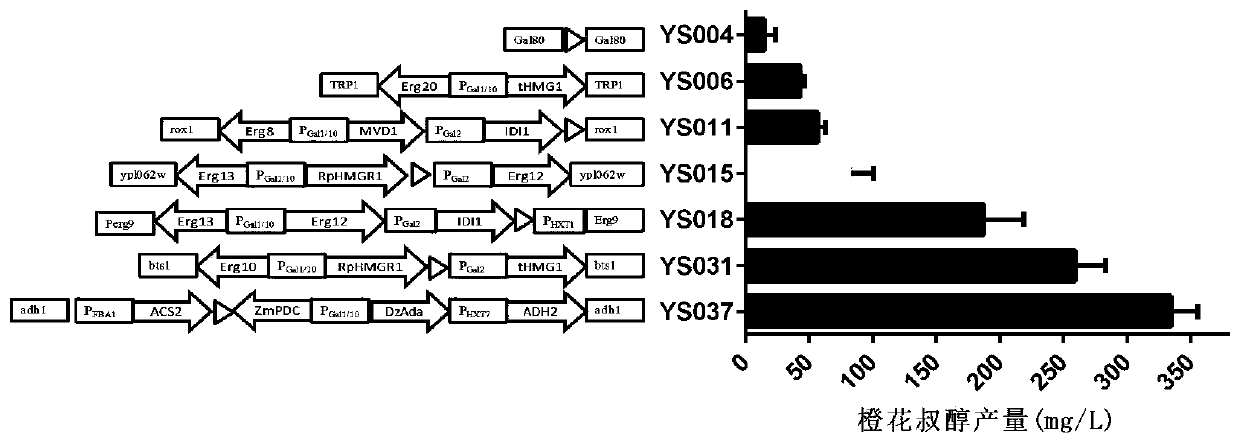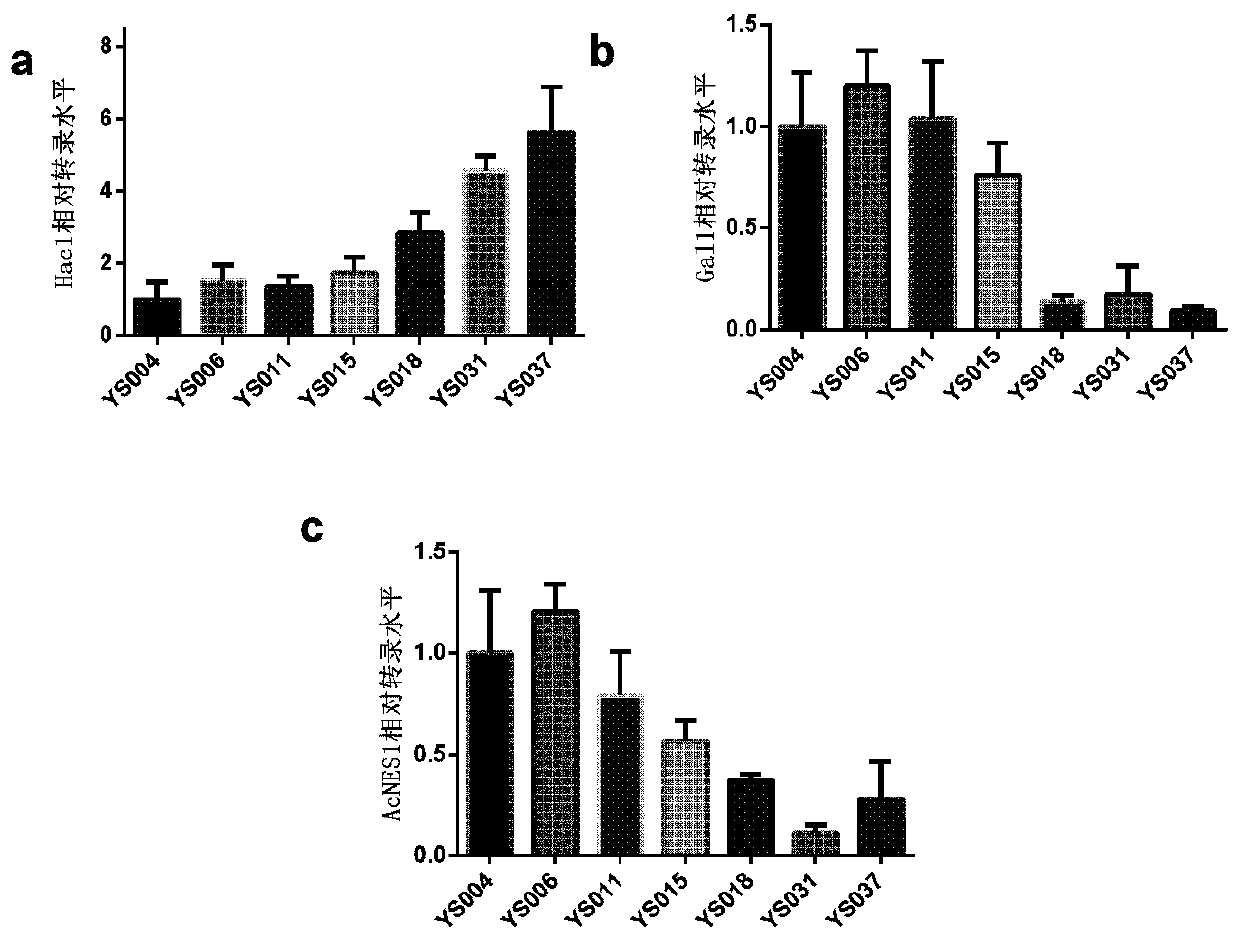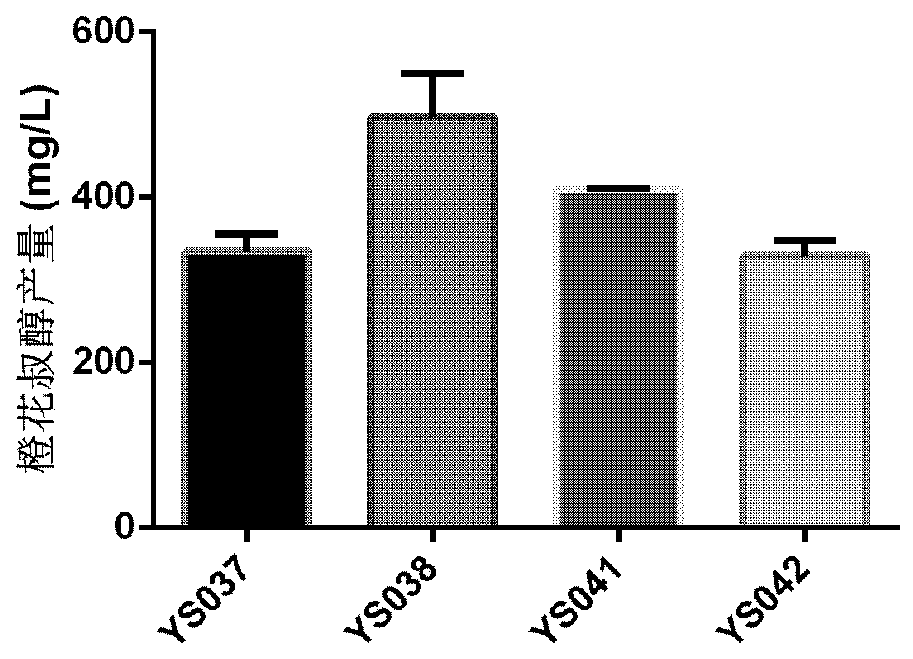Method for increasing nerolidol yield of saccharomyces cerevisiae
A technology of Saccharomyces cerevisiae and nerolidol, which is applied in the field of increasing the production of Saccharomyces cerevisiae nerolidol, can solve the problems such as the decrease of enzyme gene transcription level, and achieve the effects of promoting synthesis, improving transcription activity and strain vigor, and increasing yield
- Summary
- Abstract
- Description
- Claims
- Application Information
AI Technical Summary
Problems solved by technology
Method used
Image
Examples
Embodiment 1
[0027] Example 1 Construction of strains based on secondary growth induction system and determination of nerolidol production
[0028] 1. Strain construction
[0029] There are many examples of synthesizing terpenoids in the metabolic engineering of Saccharomyces cerevisiae. Based on these reports, we strengthened the metabolic flow of the MVA pathway and strengthened the conversion of ethanol to acetyl-CoA, while weakening the synthesis pathway of squalene. Refer to the literature ( Coupling gene regulatory patterns to bioprocess conditions to optimizesynthetic metabolic modules for improved sesquiterpene production in yeast, Biotechnol. Carotenoid-basedphenotypic screen of the yeast deletion collection reveals new genes withroles in isoprenoid production, Metab.Eng.15(2013)174-183.) Constructed a series of Saccharomyces cerevisiae capable of synthesizing nerolidol driven by a secondary growth induction system The bacterial strain (table 1) of engineering bacterium, carries ...
Embodiment 2
[0059] Determination of Hac1 transcript level in the bacterial strain constructed in embodiment 2
[0060] According to the instructions of the TransZol Up kit (Quanshijin, China), RNA was extracted from strains YS004, YS006, YS011, YS015, YS018, YS031 and YS037 after 72 h of culture, RNA was quantified by NanoDrop 2000c (Thermo Fisher, USA), and then 500ng of total RNA was used as a template, and cDNA was synthesized by reverse transcription using a qPCR RT kit (Toyobo, Japan). Quantitative PCR assay was performed with Lightcycler 480II Real-TimePCR System (Roche, Switzerland) using SYBR GreenReal time PCR Master Mix (Toyobo, Japan). Gene-specific primers are listed in Table 3. Set the PCR program as 95°C for 30s, then 95°C for 5s, 57°C for 5s and 72°C for 15s for a total of 40 cycles. use 2 -ΔΔCT Method, calculate the expression levels of Hac1, Gal1, Gal4 and AcNES1 mRNA relative to the internal reference ACT1, the results are shown in figure 2 shown.
[0061] In the u...
Embodiment 3
[0066] Example 3 Effect of overexpressing Hac1 on the synthesis of nerolidol
[0067] The primers and templates used in this example are listed in Table 4, and the constructed strains are listed in Table 5.
[0068] Construction of strain YS038: We constructed nerolidol synthesis by constitutively overexpressing Hac1 on the pRS316 plasmid (A system of shuttle vectors and yeast host strains designed for efficient manipulation of DNA in Saccharomyces cerevisiae. Genetics (1989) 122, 19–27) Strain YS038. Use primers Hac1-F1 / Hac1-R1 and Hac1-F2 / Hac1-R2 in Table 4 to clone two DNA fragments of Hac1 from the genome of Saccharomyces cerevisiae CEN.PK2-1D, the first fragment (fragment 1) is SEQ ID 1-660 bases of NO.1, and the second fragment (fragment 2) is 661-991 bases of SEQ ID NO.1 (the last 274 bp is the terminator sequence of the HAC1 gene). The two DNA fragments of Hac1 were fused by overlap extension PCR to obtain the spliced HAC1 fragment, i.e. sequence SEQID NO.1; using ...
PUM
 Login to View More
Login to View More Abstract
Description
Claims
Application Information
 Login to View More
Login to View More - R&D
- Intellectual Property
- Life Sciences
- Materials
- Tech Scout
- Unparalleled Data Quality
- Higher Quality Content
- 60% Fewer Hallucinations
Browse by: Latest US Patents, China's latest patents, Technical Efficacy Thesaurus, Application Domain, Technology Topic, Popular Technical Reports.
© 2025 PatSnap. All rights reserved.Legal|Privacy policy|Modern Slavery Act Transparency Statement|Sitemap|About US| Contact US: help@patsnap.com



